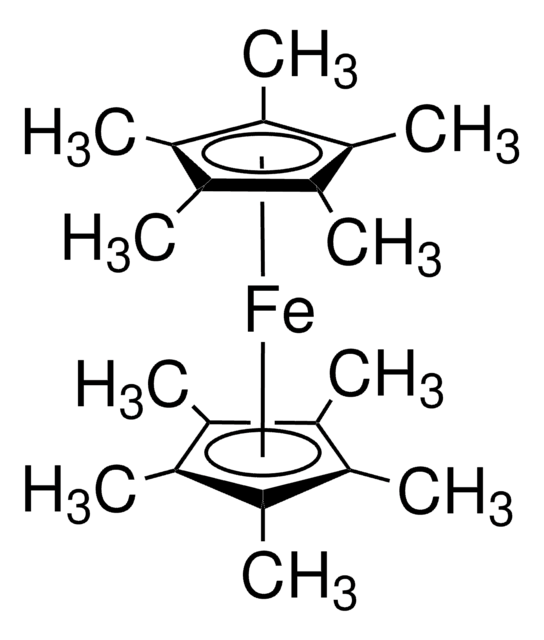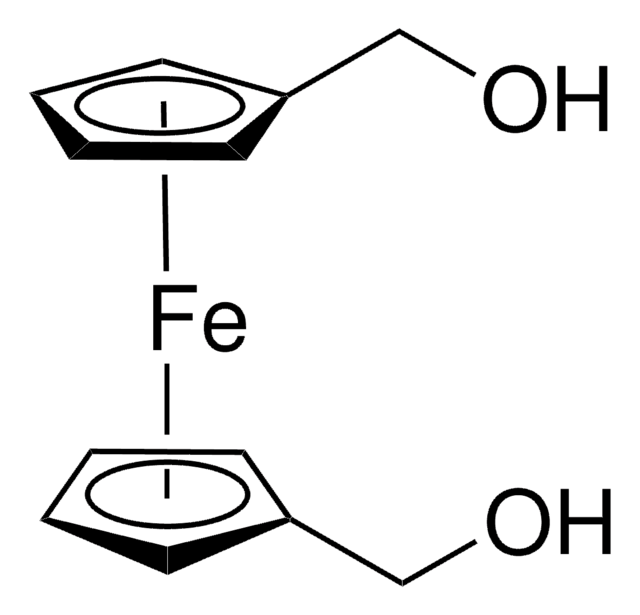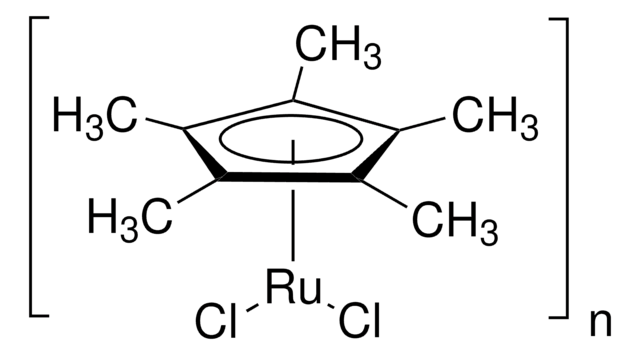303690
Hexaammineruthenium(II) chloride
99.9% trace metals basis
Synonyme(s) :
Ruthenium(III) chloride hexaammoniate
About This Item
Produits recommandés
Pureté
99.9% trace metals basis
Forme
solid
Pertinence de la réaction
reagent type: catalyst
core: ruthenium
Impuretés
≤1500.0 ppm Trace Metal Analysis
Solubilité
H2O: slightly soluble(lit.)
Température de stockage
2-8°C
Chaîne SMILES
N.N.N.N.N.N.[Cl-].[Cl-].[Ru++]
InChI
1S/2ClH.6H3N.Ru/h2*1H;6*1H3;/q;;;;;;;;+2/p-2
Clé InChI
SHHNQLHKJVODTN-UHFFFAOYSA-L
Description générale
Mention d'avertissement
Warning
Mentions de danger
Classification des risques
Acute Tox. 4 Oral - Eye Irrit. 2 - Skin Irrit. 2 - STOT SE 3
Organes cibles
Respiratory system
Code de la classe de stockage
11 - Combustible Solids
Classe de danger pour l'eau (WGK)
WGK 3
Point d'éclair (°F)
Not applicable
Point d'éclair (°C)
Not applicable
Équipement de protection individuelle
dust mask type N95 (US), Eyeshields, Gloves
Certificats d'analyse (COA)
Recherchez un Certificats d'analyse (COA) en saisissant le numéro de lot du produit. Les numéros de lot figurent sur l'étiquette du produit après les mots "Lot" ou "Batch".
Déjà en possession de ce produit ?
Retrouvez la documentation relative aux produits que vous avez récemment achetés dans la Bibliothèque de documents.
Les clients ont également consulté
Articles
Hydrogen is one of the most important resources in providing food, fuel, and chemical products for our everyday life. Sustainable catalytic hydrogen production from bioethanol has gained significant attention in recent years due to globally diminishing fossil fuel supplies, which have necessitated the search for new chemical feedstocks.
Notre équipe de scientifiques dispose d'une expérience dans tous les secteurs de la recherche, notamment en sciences de la vie, science des matériaux, synthèse chimique, chromatographie, analyse et dans de nombreux autres domaines..
Contacter notre Service technique














